SunGrains Collective Sets The Model For Collaborative Plant Breeding
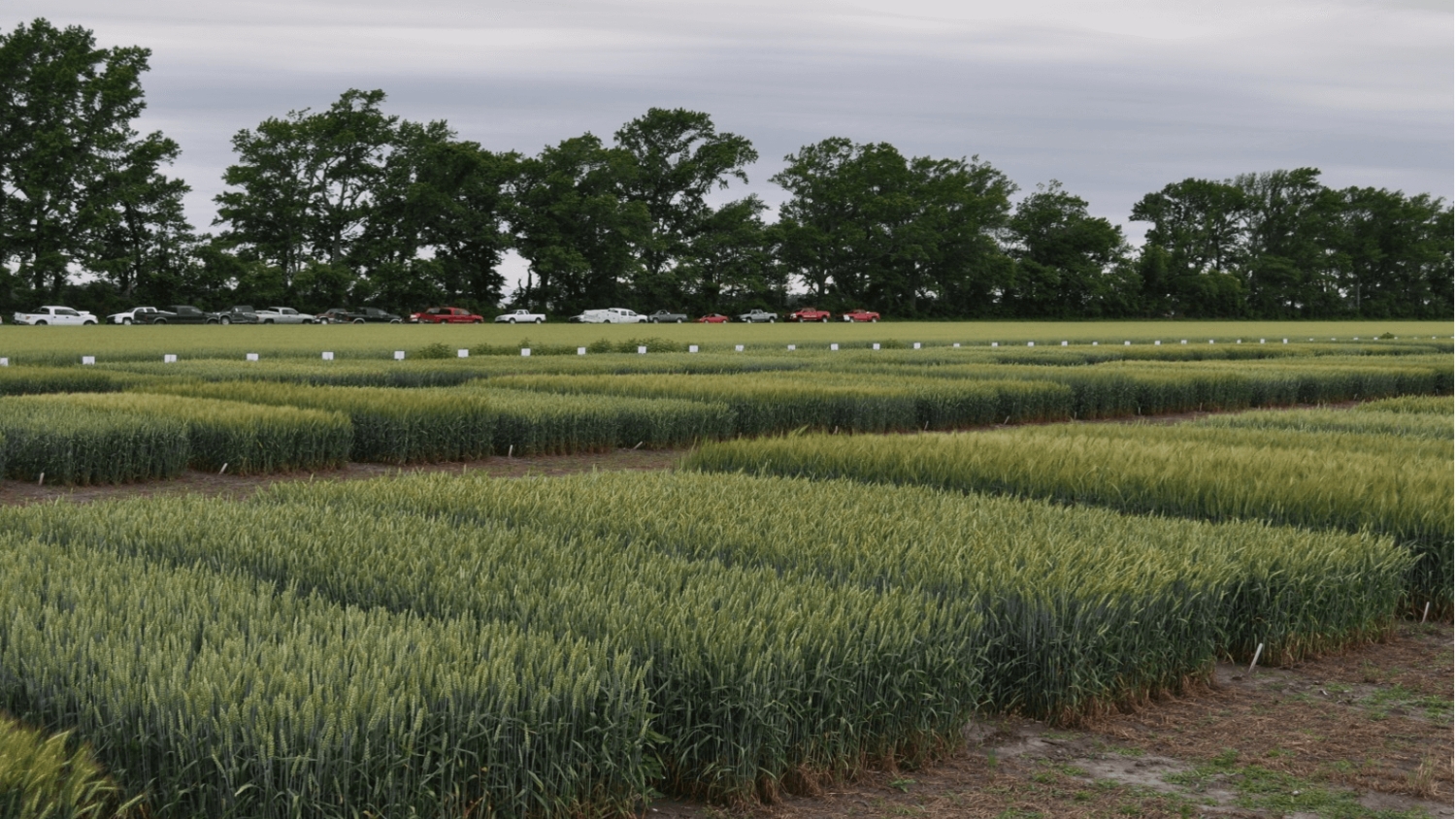
Small grains, including wheat, oats, triticale and rye, may represent a relatively small part of North Carolina’s agricultural portfolio, but a good harvest offers welcomed summer cash flow and a valuable crop rotation option if a grower can overcome undulating seasonal variables.
In North Carolina and much of the Southeast, wheat growers face yield-limiting pressures from a host of pests and pathogens, including the economically devastating and physically toxic wheat Fusarium head blight or scab. Without a crystal ball, growers depend on the inbred insurance of crop resilience resulting from years of breeding work to meet demands.
Independent small grains breeders at multiple southern universities recognized that they were individually making modest progress on similar goals. In 2005, they joined forces to create a collaborative breeding program that has become the model for larger producing regions and even other crops.
SunGrains Aggregates Breeding Efforts
SunGrains is a collaborative breeding program of seven states, including North Carolina, Clemson, Georgia, Florida, Louisiana, Texas and Arkansas. The collegial group shares knowledge and plant materials to enhance their individual breeding interests and then mutually assesses advanced breeding lines in uniform nurseries at each university.
The group shares a work-reward model where collaborators share both the expenses from pricey doubled haploid plants as well as the resulting royalties from variety licensing. The integrated program likely represents the most coordinated multistate breeding project in the country.
North Carolina State University plant breeder Paul Murphy is a founding SunGrains member.
“A breeder should produce better advanced-generation lines each year for yield, disease and insect resistance, but without significant intellectual and technological investment, individual programs are fairly limited,” Murphy said. “Our smaller southeastern wheat programs needed regional cooperation to keep pace with the Midwest and Plains States. Now the SunGrains group is bigger than any single university program allowing us to bring adapted varieties to market faster.”
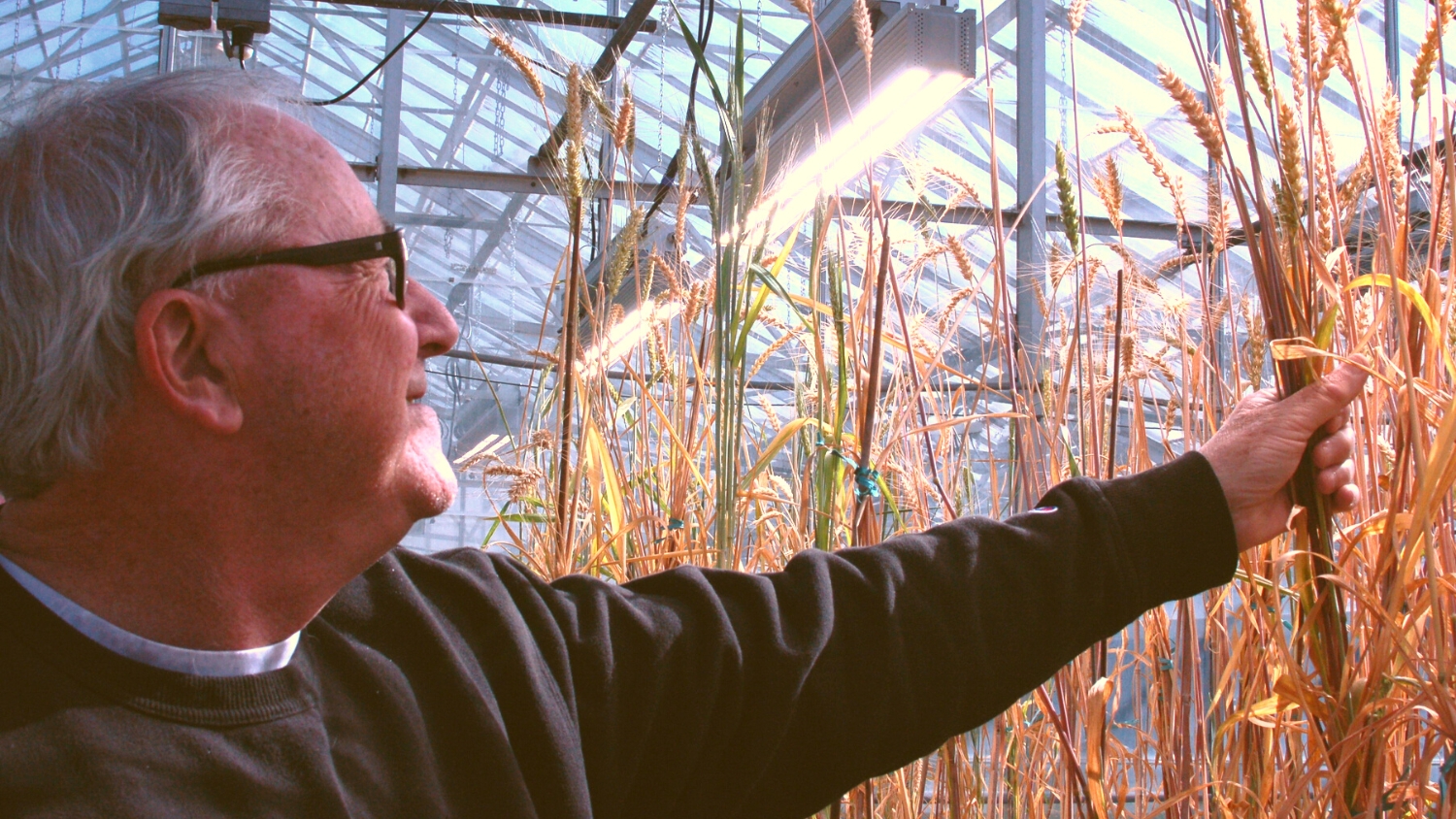
Paul Murphy has spent over 39 years building NC State’s small grains breeding program and is a founding member of SunGrains.
Genomics Levels the Playing Field
Since 2005, the SunGrains group has released 77 varieties of wheat, oats, triticale and rye. This volume of plant improvement is catalyzed by a powerful ally – the USDA’s Eastern Genotyping Lab located on NC State’s campus. The lab serves all small grains breeders in the East, ranging from southern Texas to northern Michigan, synthesizing field and genomic research data and advising on gene discovery, trait mapping and genomic selection.
Gina Brown-Guedira, the regional lab’s leader and research geneticist, says the USDA’s genomics work lays a foundation connecting SunGrains breeders and others in the eastern U.S.
“We evaluate DNA markers that provide data on over 60 wheat alleles and allow breeders to track the genes most important in their variety development,” Brown-Guedira said. “Because we receive seed from breeders in half of the country, we watch trends in alleles conferring pest resistance or even what traits are missing from current germplasm.”
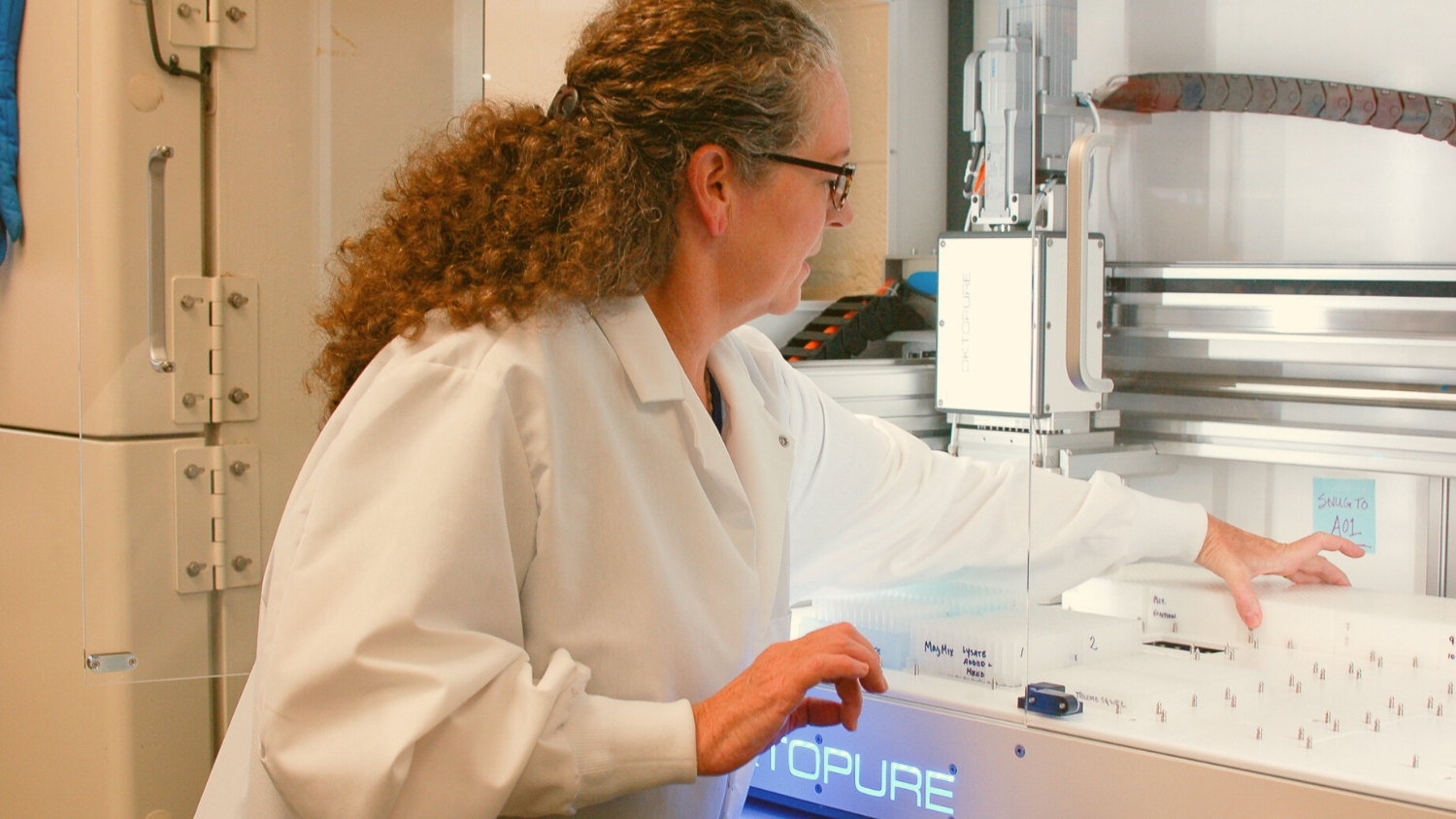
Gina Brown-Guedira’s lab evaluates wheat DNA and advises eastern U.S. wheat breeders on the presence of agronomically important genes.
Her lab evaluates over 15,000 prospective lines annually and additionally provides breeders with information about hundreds of thousands of DNA variants. This enables predictive modeling on the performance and outcomes of various crosses before expensive field testing. These insights guide breeders on where they could focus their efforts.
One of her key priorities is finding the causal genes or combinations that provide resistance to wheat scab and its associated mycotoxin which is detrimental to human health and economically significant in the southeast. Her lab leverages adapted varieties to direct these breeding efforts.
“Virginia Tech and NC State varieties have some of the best resistance to scab in the eastern U.S. We have done capture and sequencing of all the genes from a broad sample of local wheats and recently determined the complete DNA sequence of two cultivars. We are now using this information to identify disease-resistance genes,” Brown-Guedira said. “The sequence data also improves our understanding of overall genetic variation and helps to predict performance and assess the value of the genes across environments.”
She thinks the plant breeder/USDA partnership is an ideal model, improving the quality and timeline of variety improvement.
“Our relationships are a great example of the strategy behind genomics-assisted breeding — centralize the technology investment to benefit the broadest scope of small grains breeding programs. It puts everyone on an even playing field,” Brown-Guedira said.
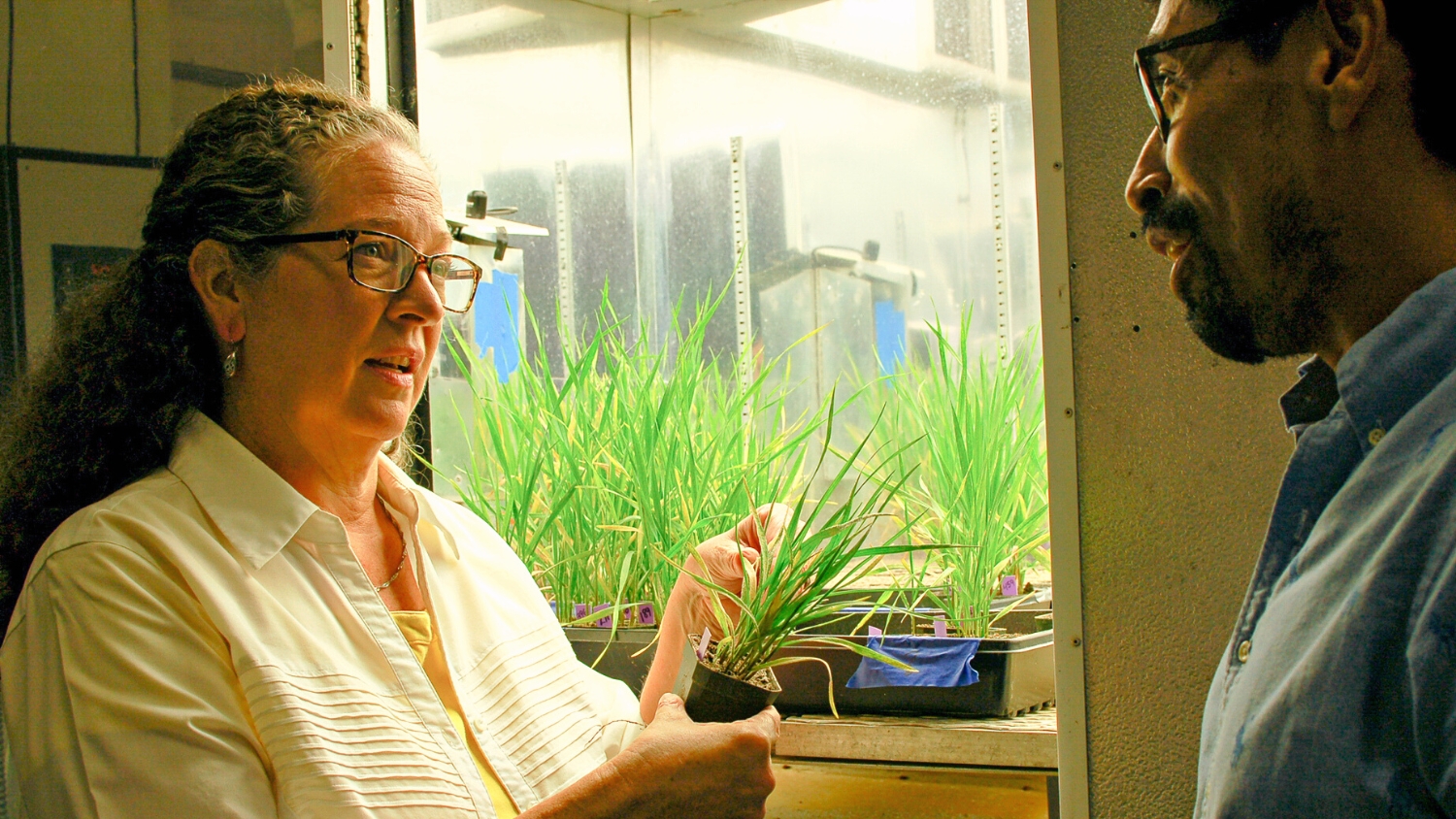
Gina Brown-Guedira discusses a wheat sample with post-doctoral researcher Luis Rivera-Burgos at the NC State’s controlled environment phytotron.
Paul Murphy credits Brown-Guedira’s work for paving the way for SunGrains’ regional success.
“The USDA partnership has been a tremendous boon for the Southeast,” Murphy said. “Gina’s USDA lab allows SunGrains breeders to leverage big data science by combining massive amounts of DNA sequence data and field data for a new approach to variety development — genomic selection. It wouldn’t be possible without the USDA in this region.”
Other small grains programs and even other crop breeders are reportedly considering similar multistate cooperatives based on the SunGrains model.
NC State Breeding for Sustainability
Because North Carolina’s pest and environmental pressures vary annually, one of Murphy’s soft winter wheat breeding strategies is to capitalize on a variety’s natural pest tolerance rather than strive for complete resistance, a characteristic he’s working with for Hessian fly control.
“My graduate student, Zach Winn, recently identified a gene controlling tolerance to Hessian fly,” Murphy said. “It’s been present in southern germplasm for a while, but we couldn’t pinpoint it. It’s an exciting development because the pest survives at a low level while not impacting yield and importantly, not mutating to a more virulent biotype.”
Now that the genetic location has been identified and DNA markers developed, it can be retroactively tracked in older varieties and used for future selection. Murphy expects the characteristic to be commercially available in SunGrains varieties in the next few years.
He acknowledges that yield is the primary trait growers want, but it’s not the only one they need. He says that growers can count on at least one major biotic or abiotic pressure each year. Plant breeding for localized pressures provides a regionally targeted insurance policy.
“Some years it’s scab or Hessian fly. Rust is apparent almost every year,” Murphy said. “Growers need varieties that have a pyramid of resistance genes. SunGrains is producing and labeling these regionally adapted genetic stacks better than ever. As a grower, knowing your planted variety has a specific resistance or tolerance trait can significantly impact in-season management decisions.”
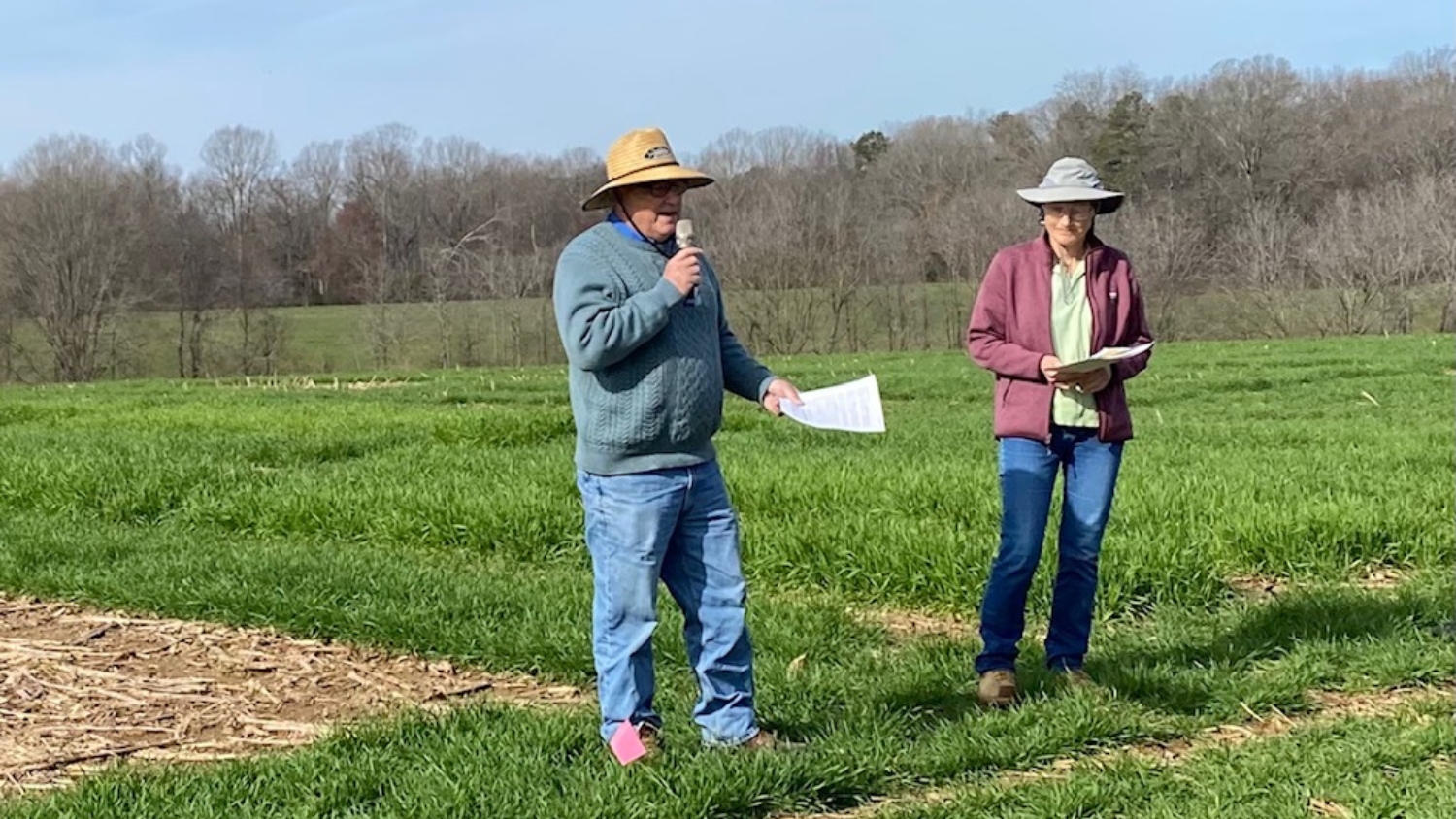
Paul Murphy and USDA-ARS Plant Pathologist Christina Cowger present research updates at a Union County, NC small grains field day.
SunShow Ensures Equal Introductions
While variety development has been well coordinated in the SunGrains group, the marketing rollout of varieties has been somewhat haphazard, with each university going its own way. The group is now enhancing their licensee feedback loop to deliver the best-adapted varieties.
SunShow is a new initiative designed to rectify this end-of-pipeline weakness and centralize information for over 30 potential licensees of SunGrains varieties. It involves a two-pronged process: an annual poll of all potential licensees concerning current or potential gaps in their variety portfolios, and growing drill strips adjacent to the state official variety trial (OVT) for all the licensable SunGrains lines.
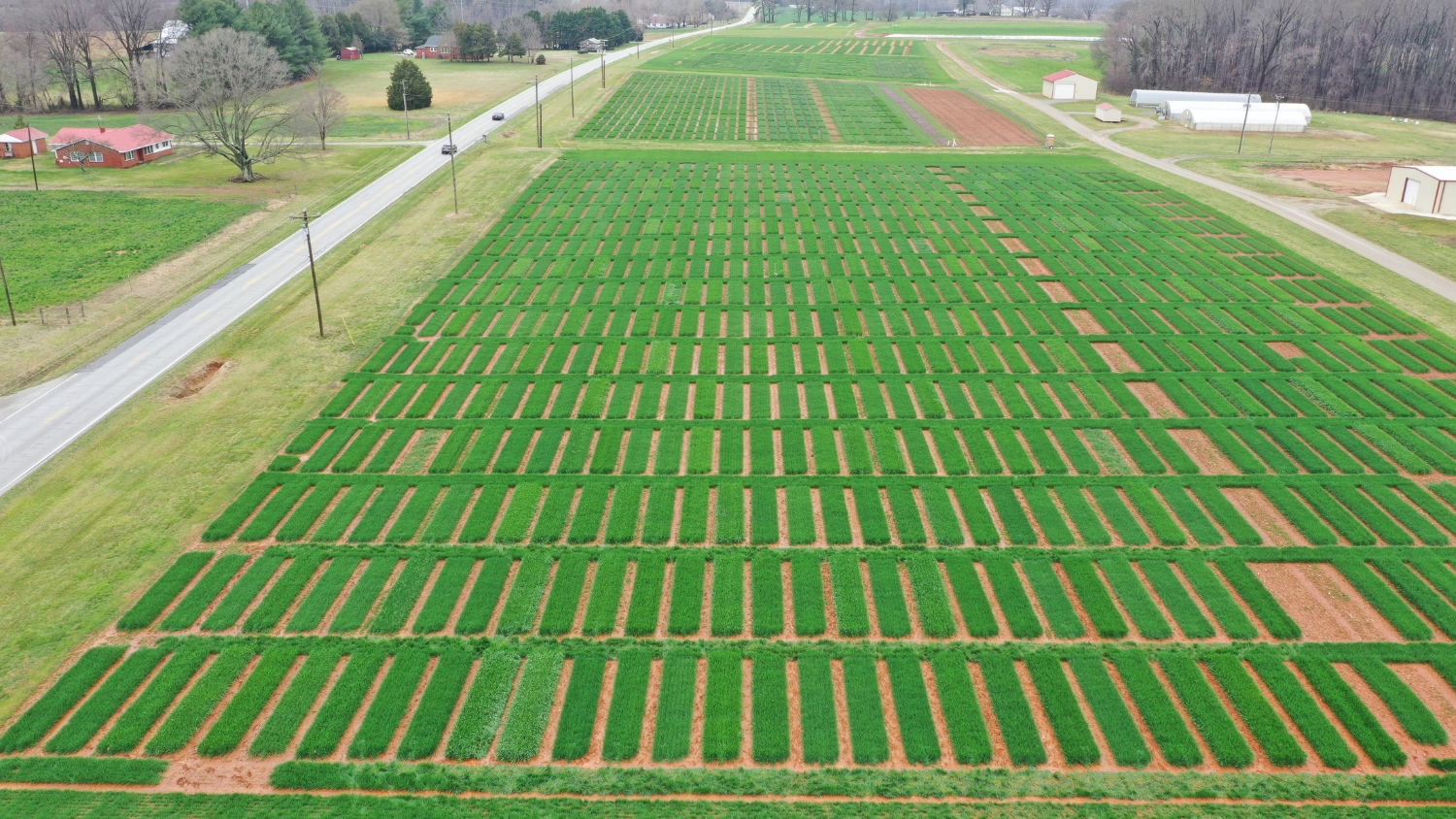
North Carolina 2022 OVT wheat plots in Salisbury, NC. Research plots including SunGrains varieties appear in the distant field blocks.
SunShow enhances the appraisal experience for potential licensees through uniformity in demonstrations and provides clarity concerning adaptation across the region. Large signs are placed in front of each plot with important information, and QR codes provide links to a website, providing in-depth information on each available line.
Ryan Heiniger manages North Carolina’s OVT program.
“The OVT provides unbiased variety performance data that growers use to make variety choices specific to their operations. We test hundreds of varieties across multiple environments which provides growers and seed companies with the most robust performance data for the state,” Heiniger said. “The SunShow plots along with the corresponding OVT tests will provide potential licensees with a truly comprehensive look at variety performance across the state.”
Want More Plant Progress?
Crop and Soil Sciences’ research impacts farmers, students and NC citizens through innovations in food, feed, fuel and fiber. Follow how our discoveries affect agriculture and environmental science by joining our weekly newsfeed.
If you are a student interested in agronomy or crop production, investigate our undergraduate and graduate degree programs. Then join us for a guided email tour of our department and university.
Improving NC agriculture and the environment through stewardship is just part of how we are growing the future.

- Categories: